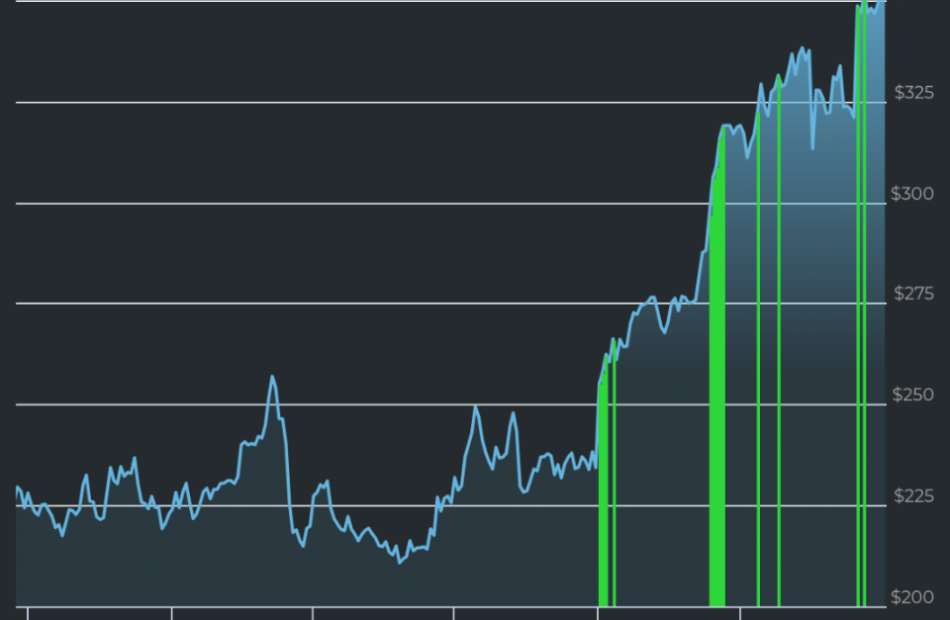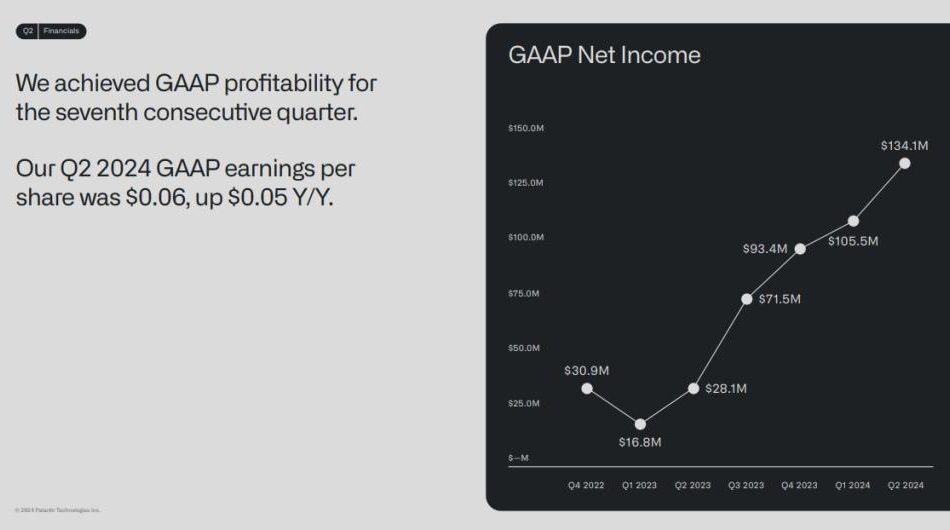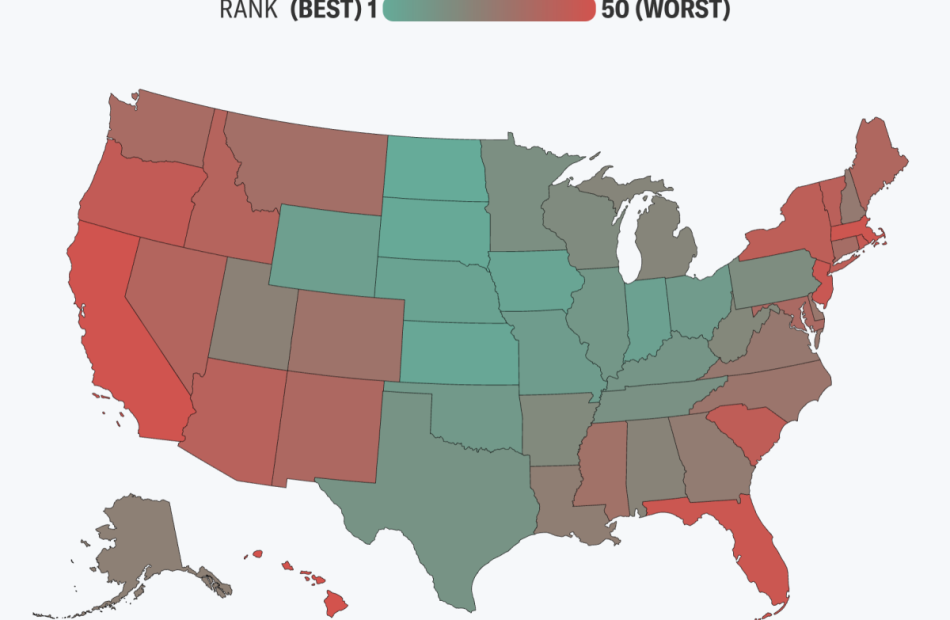Wells Fargo analyst cuts target on Prospect Capital one day after berating by CEO
Finian O’Shea, an analyst from investment bank Wells Fargo, has trimmed the price target on Prospect Capital Corporation (NASDAQ:PSEC) a day after the company’s CEO and founder, John F. Barry III, lashed out at him during a quarterly earnings call.
The analyst and CEO bickered on the company’s earnings call on Thursday after O’Shea asked under what circumstances the company would force the conversion of some of its preferred stock into common shares. Barry responded that the firm has no reason to contemplate this.
“No, we’re not rushing to break the glass here. I’m just astonished by these questions,” Barry said during a heated exchange with the analyst. “Is the house on fire? Why are we even discussing this?”
Later in the exchange, Barry added, “By the way, why don’t you do the world a favor and do a little research before you come on an earnings call with absurd questions like this? You don’t even know what you’re talking about.”
O’Shea has now reduced Prospect Capital’s stock price target to $4.50 from $5.00 and retained the stock’s Underweight rating. The analysts’ rating is equivalent to a sell rating at other firms.
“Though management described this quarter’s conversion rate as more one-off, we see risk of heavier dilution should market conditions change. PSEC’s recent performance (with NAV down 18% since Dec. ’21) and a downward pointing SOFR curve could put the dividend at risk, which at a ~14% yield is likely a major pillar of support to today’s stock price. Full conversion today would impact NAV by another ~20%, we estimate,” O’Shea said in an analysis released on Thursday.
Prospect, on Wednesday, reported that its net investment income declined 8.7% to $102.9 million in the fourth fiscal quarter as compared to the same quarter last year. Its net asset value stood at $3.71 billion. It saw an increase in the weighted average cost of unsecured debt financing to 4.25%. It declared monthly common shareholder distributions of $0.06 per share for September and October.
Wells Fargo has also noted some changes on the asset side, including roughly flat non-accruals with the Strategic Materials exit at a realized loss.
“Near-term maturity Atlantis Health was kicked out a year (to May ’25), Rosa Mexicano was extended two years (now Jun. ’26) and Town&Country was extended from Feb ’26 to Aug. ’28, said O’Shea, adding, “The structured credit book was described as non-impactful to NAV, which would indicate an accelerated return of capital given the fair value drop was sharper than recent trends.”
Wells Fargo has also updated its net operating income (NOI) forecasts for Prospect Capital for fiscal years 2025 and 2026. The new estimates are set at $0.61 and $0.50 respectively, a decrease from the earlier predictions of $0.67 and $0.60, respectively.
“Our NOI estimates for fiscal ’25 and ’26 moved to $0.61 and $0.50, from $0.67 and $0.60, previously, primarily on a lower SOFR curve, and a higher share count through conversions of prefs / DRIP issuance. Our PT moves to $4.50 (from $5), which continues to reflect a 13% yield on forward NOI. We maintain our Underweight rating,” said the analyst.
Related Articles
Wells Fargo analyst cuts target on Prospect Capital one day after berating by CEO
Greece stocks higher at close of trade; Athens General Composite up 0.30%
Lula says Musk must respect Brazil’s top court as X braces for shutdown
United Therapeutics Shares Thrive
The biotechnology company develops multiple treatments for pulmonary arterial hypertension, which is a form of elevated blood pressure in the lungs, as well as treatments for other diseases. Its Tyvaso medicine should benefit from a regulatory approval delay for a competing drug, leaving UTHR without direct competition to hinder its business development efforts.
Financially, the company’s second-quarter performance featured revenue growth of almost 20% and per-share earnings growth of 12%. UTHR’s pipeline is promising too. Analysts suggest the commercialization of new therapies could generate 50% returns or more in the next few years.
It’s no wonder UTHR shares are up 64% this year – and they could rise more. MAPsignals data shows how Big Money investors are betting heavily on the forward picture of the stock.
United Therapeutics Under Heavy Accumulation
Institutional volumes reveal plenty. Recently, UTHR has enjoyed strong investor demand, which we believe to be institutional support.
Each green bar signals unusually large volumes in UTHR shares. They reflect our proprietary inflow signal, pushing the stock higher:
Plenty of health care names are under accumulation right now. But there’s a powerful fundamental story happening with United Therapeutics.
United Therapeutics Fundamental Analysis
Institutional support and a healthy fundamental backdrop make this company worth investigating. As you can see, UTHR has had strong sales and earnings growth:
Source: FactSet
Also, EPS is estimated to ramp higher this year by +14.8%.
Now it makes sense why the stock has been powering to new heights. UTHR has a track record of strong financial performance.
Marrying great fundamentals with our proprietary software has found some big winning stocks over the long term.
United Therapeutics has been a top-rated stock at MAPsignals for years. That means the stock has unusual buy pressure and growing fundamentals. We have a ranking process that showcases stocks like this on a weekly basis.
It’s made the rare Top 20 report multiple times in the last year. The blue bars below show when UTHR was a top pick…sending shares upward:
Tracking unusual volumes reveals the power of money flows.
This is a trait that most outlier stocks exhibit…the best of the best. Big Money demand drives stocks upward.
United Therapeutics Price Prediction
The UTHR rally isn’t new at all. Big Money buying in the shares is signaling to take notice. Given the historical gains in share price and strong fundamentals, this stock could be worth a spot in a diversified portfolio.
Disclosure: the author holds no position in UTHR at the time of publication.
If you are a Registered Investment Advisor (RIA) or are a serious investor, take your investing to the next level, learn more about the MAPsignals process here.
This article was originally posted on FX Empire
More From FXEMPIRE:
Institutional Investors Eye $10T Digital Asset Boom
Digital assets are gaining traction among institutional investors, with cryptocurrencies, non-fungible tokens, and tokenized securities leading the way, according to a new report from Economist Impact.
The study, commissioned by OKX, highlights the growing convergence between traditional finance and digital-native players in the evolving ecosystem.
By 2030, the value of tokenized assets is projected to surpass $10 trillion, up from $400 billion in 2023, the report states. This market opportunity has 69% of institutional investors anticipating increased allocations to digital assets or related products in the next two to three years.
Current digital asset allocations in institutional portfolios range from 1% to 5%, depending on risk appetite, the study notes. Bitcoin and ether, the token of the Ethereum smart contracts blockchain, remain the largest investment avenues, but institutional investors are showing an appetite for other types of crypto assets.
Surge in Crypto ETF Approvals
The approval of 11 spot bitcoin ETFs in the United States led to cumulative institutional investment reaching over $40 billion in March 2024, according to the report. Additionally, spot ethereum ETFs exceeded $1 billion in trading volume on their debut trading day in July.
IBIT 3-month flows
Source: etf.com
Institutional-grade custody solutions are emerging as a driver of mainstream adoption among institutional investors, the study found. These solutions address challenges posed by digital assets, such as cybersecurity risks, hacking, and loss of private keys.
Regulatory developments are shaping the digital landscape. The report highlights recent initiatives, such as the United Arab Emirates establishing the first regulatory authority dedicated to virtual assets and Hong Kong’s Securities and Futures Commission approving the launch of spot bitcoin and ether ETFs.
Risk management remains a consideration for institutional investors entering the digital asset space. The report suggests adapting traditional finance strategies, such as value-at-risk models, scenario analysis, and reverse stress testing, to account for the characteristics of digital assets.
As of May 2024, stablecoins have reached a total market capitalization of $169.5 billion, the study notes. These digital assets serve as a bridge between fiat currencies and blockchain technology, combining traditional financial instruments with other features.
The maturing ecosystem of market participants is unlocking institutions’ access to digital assets, the report states. Financial players that streamline diverse products and services can become partners for institutional investors looking to enter the space.
72-Year-Old Unexpectedly Lost His Wife And Realized He's Not The Heir To Her $1.5 Million — Suze Orman Says Only Rely On Yourself
In an August episode of her podcast, financial expert Suze Orman shared a deeply personal and thought-provoking email from a listener named Peter, a 72-year-old retiree. Peter’s situation highlights the importance of proactive financial planning and clear family communication, especially as we age.
Don’t Miss:
Peter had been married for 40 years when his wife suddenly passed away from pneumonia at the age of 69. Like many couples, they had their financial responsibilities divided — his wife managed their investments, while Peter focused on his career. This arrangement worked well until her unexpected death left Peter to navigate their finances alone. It was then that Peter discovered a shocking twist: his wife’s $1.5 million inheritance from her father would not go to him but to their two sons, both in their forties.
Trending:
Peter reached out to Suze Orman for advice on how to handle this complex and emotional situation. He explained that he and his wife had always planned on using her inheritance to secure their retirement. But with her gone, the inheritance legally passed to their sons, leaving Peter in a precarious financial position. His only sources of income were Social Security and the interest from his investments, and he was concerned about whether he had enough money to live on.
Orman shared Peter’s story with her listeners, beginning with a powerful question she had posed to her own loved ones earlier that morning: “What is something that you would be willing to give up your life for?” This question set the tone for the gravity of Peter’s dilemma, as it became clear that his financial future was now at the mercy of his sons’ decisions.
See Also:
Orman advised Peter to take a direct approach with his sons. She suggested asking them to pay off his $400,000 mortgage, noting, “If they did inherit $1.5 million, each could simply give him $200,000, and Peter would own the house outright.” Alternatively, she recommended that his sons provide a monthly allowance, “Maybe two or three thousand dollars a month,” to help Peter maintain his lifestyle without financial strain. If these options aren’t feasible, Suze advised, “Cut your expenses and live within your means,” by considering downsizing his home.
But unfortunately, Peter’s follow-up email revealed that the situation had not gone as planned. Although his sons each inherited $750,000, they were reluctant to part with the money. One son, in particular, suggested that Peter invest more aggressively, despite Peter’s preference for conservative investments like T-bills and high-yield savings accounts. “It’s getting stressful for all three of us,” Peter wrote, “but it’s most stressful on me.”
Trending:
Suze used Peter’s story to emphasize the importance of having tough financial conversations with family members before they become necessary. “Have you had discussions with them about money, who it goes to, how it gets passed down?” she asked her listeners.
Peter’s situation is a reminder that assumptions about family support can lead to financial insecurity. As Suze put it, “You have to put yourself in a situation where you can take care of yourself financially… without asking anybody, including your children, for money.” By taking these steps, Peter — and anyone else in a similar situation — can protect their financial future and maintain their independence.
Read Next:
“ACTIVE INVESTORS’ SECRET WEAPON” Supercharge Your Stock Market Game with the #1 “news & everything else” trading tool: Benzinga Pro – Click here to start Your 14-Day Trial Now!
Get the latest stock analysis from Benzinga?
This article 72-Year-Old Unexpectedly Lost His Wife And Realized He’s Not The Heir To Her $1.5 Million — Suze Orman Says Only Rely On Yourself originally appeared on Benzinga.com
© 2024 Benzinga.com. Benzinga does not provide investment advice. All rights reserved.
Top Truth Social execs—including the CEO—are shedding stock before Trump even can
Donald Trump is in need of a massive payday to cover his legal expenses and presidential campaign, but he can’t tap into his Truth Social stock. At least not quite yet.
In late March, the former president’s social media company started trading on Nasdaq when Trump Media & Technology Group. Corp. merged with a blank-check company called Digital World Acquisition Corp. Truth Social launched in February 2022 after Trump was banned from Facebook and X as a consequence of the Jan. 6, 2021 insurrection at the Capitol. While he’s since been reinstated on both platforms, he’s stuck to his own although his company isn’t performing as well as when it first launched.
Since its inception, Truth Social’s share price has largely plummeted. After soaring to $57.99 per share at launch, it’s worth just $19.60 per share, valuing the company at just over $3.8 billion. That means Trump’s payday—if he chooses to sell off his majority stake—will be much smaller than anticipated earlier this year.
“Truth Social is tanking because it is essentially a meme stock,” Robert R. Johnson, a finance professor at Creighton University and author of The Tools and Techniques Of Investment Planning, Strategic Value Investing and Investment Banking for Dummies, told Fortune. “The stock price of Truth Social is unconnected to the reality of the financials of the firm. In the first quarter of 2024, the firm lost $327 million on revenues of only $770,500. These aren’t numbers that remotely support the current stock price, much less the atmospheric values—nearly $80—that the stock hit in late March.”
How much Truth Social stock does Trump own and when can he sell it?
Trump owns a $2.3 billion stake in Trump Media & Technology Group, which trades as under ticker DJT (also his initials), but he can’t liquidate any of it until Sept. 25, according to SEC filings. That’s due to a lock-up period rule, which prevents insiders from immediately selling once a company goes public.
But Trump could sell off his shares five days if Trump Media’s share price equals or exceeds $12 for any 20 trading days within a 30-day trading period starting Aug. 22. If the stock price stays steady, that means Trump’s restrictions could lift as soon as Sept. 20.
While Trump isn’t able to start selling his shares yet, some other insiders have started shedding their stake in the company. Trump Media’s chief financial officer and treasurer, Phillip Juhan, disclosed last week he’s selling $1.9 million worth of stock, according to SEC filings. Trump Media’s general counsel Scott Glabe, chief operating officer Andrew Northwall, and chief technology officer Vladimir Novachki each also sold shares, according to Aug. 22 SEC filings. Devin Nunes, a former Republican congressman and Trump Media’s CEO and president, also sold off $632,000 worth of stock last Thursday.
While it’s not necessarily uncommon for executives to sell some of their stake in a company, selling at a loss—which they did—can be an indicator for trouble ahead.
“Since selling a stock at a loss is painful, an investor who sells at a loss must have particularly negative information,” Peter Kelly, a finance professor at the University of Notre Dame, wrote in a 2018 paper published by Oxford Academic. “And what you see is when stocks are sold at a loss, it predicts negative returns.”
Would Trump really sell his DJT shares?
While Trump is still sitting on a nice chunk of change, it’s somewhat unlikely that he’d sell his entire stake in the company for some cash flow. That’s largely because it could end up tanking the stock even further.
“Speculators in Truth Social would likely see a sizable loss in wealth as Trump sells off some of his position in the firm,” Johnson said.
And that wouldn’t be in Trump’s interest since many shareholders are also his political supporters who could get burned by a massive sell-off.
“If Trump were to sell a large number of shares and the stock price tanks, to some degree he would be burning his own supporters who bought the stock,” Jay Ritter, a finance professor at the University of Florida’s Warrington College of Business, told CNN. “Politically, that may not play out real well for him.”
While all eyes will be on Trump come late September in terms of whether he’ll choose to sell any stock, the time to really watch Trump Media stock will be around the time of the election.
“The case for speculating—note, I say speculating and not investing—in Truth Social is that Trump wins the presidency and the social media platform gains popularity and is able to create a sustainable business model,” Johnson said. “The stock is under pressure as those prospects have dimmed with the recent surge in popularity of the Democratic ticket.” As of Friday, Democratic presidential nominee Kamala Harris held a slim margin over Trump, according to a Wall Street Journal poll.
This story was originally featured on Fortune.com
Is Palantir Stock a Buy Before Sept. 20?
Each quarter, the S&P 500 index rebalances. This means new companies are added to the index, replacing existing members that are no longer eligible.
One company that has been eligible for S&P 500 inclusion for quite some time but is yet to be added to the index is Palantir Technologies (NYSE: PLTR). With the next rebalance scheduled for Sept. 20, is now the time to load up on Palantir stock?
How do companies become eligible for the S&P 500?
Eligibility criteria for S&P 500 inclusion varies among factors such as market cap, profitability, stock float, and corporate structure. In this article, I’m going to primarily focus on the profitability criteria. To become eligible for the S&P 500, a company must be profitable over the previous four quarters while specifically generating a profit in the most recent quarter.
To be clear, this means your business could burn cash for three straight quarters but then generate a profit in the fourth quarter that’s massive enough to make the net sum over the last 12 months a positive figure. The chart below illustrates Palantir’s profitability over the last several quarters.
Palantir has generated positive net income on a generally accepted accounting principles (GAAP) basis for seven consecutive quarters. The company has clearly demonstrated an ability to operate in a consistently profitable way. However, there may be a couple of big reasons why Palantir hasn’t been chosen for the S&P 500 despite its rising profit levels.
Why hasn’t Palantir been added to the S&P 500 yet?
Just to be upfront, I cannot definitively say why Palantir hasn’t been chosen for the S&P 500 yet. However, my fellow Fool Jake Lerch made an astute observation back in March as to what may be the driving decision.
It’s no secret that artificial intelligence (AI) has served as a big catalyst for the technology sector over the last two years. Palantir’s enterprise software platforms specialize in big data analytics and have witnessed soaring demand thanks to hefty investments in AI.
As the charts below clearly illustrate, Palantir’s revenue really started to kick into gear over the last two years. Moreover, this newfound AI-driven growth helped fuel sustained profitability.
Another concern could be that Palantir relies heavily on large government contracts. Generally speaking, government deals can be lumpy and unpredictable. These dynamics make it challenging to assess what a company’s future growth may look like.
At the end of the day, there is an argument to be made that Palantir’s current growth is fleeting and that the company is only benefiting from the AI hype. While I understand that thesis, I think it’s shortsighted.
Should you buy Palantir before Sept. 20?
Earlier this year, IT architecture specialist Super Micro Computer was added to the S&P 500. Just like Palantir, Supermicro has entered a new phase of growth largely driven by hefty investments in AI infrastructure, such as data centers.
Yet, unlike Palantir, Supermicro’s gross margin and profit levels are very much inconsistent — and yet, the company still earned a spot in the S&P 500 before Palantir. Additionally, investments in capital expenditures (capex) should continue to rise, according to management at mega-cap tech stalwarts such as Amazon, Alphabet, and Microsoft.
To me, concerns over the long-run sustainability of Palantir’s growth are overblown and should be put to rest. Whether you should invest in Palantir before the next S&P 500 rebalancing boils down to your risk appetite. Candidly, I would not be surprised to see shares of Palantir witness a bit of momentum as Sept. 20 draws closer.
However, investing in momentum stocks can be a real risk and leave you as a bag holder if you’re not careful. It’s important to keep in mind that Palantir is a growth stock and experiences outsize volatility compared to blue chip opportunities. Furthermore, Palantir stock is far from a bargain, considering its forward price-to-earnings (P/E) ratio of 89.5.
Should Palantir finally earn its spot in the S&P 500, you very well may see some gains in your portfolio. However, I think a more prudent strategy is to invest in Palantir using dollar-cost averaging over a long-term horizon — allowing you to buy in at different price points over time and mitigate timing risks. Investors shouldn’t weigh too much on specific dates when buying a stock but rather consider the long-term outlook.
And to me, Palantir’s future looks bright as the AI revolution continues to take shape. I think the company’s growth is only just beginning, and I see more significant gains to come.
Should you invest $1,000 in Palantir Technologies right now?
Before you buy stock in Palantir Technologies, consider this:
The Motley Fool Stock Advisor analyst team just identified what they believe are the 10 best stocks for investors to buy now… and Palantir Technologies wasn’t one of them. The 10 stocks that made the cut could produce monster returns in the coming years.
Consider when Nvidia made this list on April 15, 2005… if you invested $1,000 at the time of our recommendation, you’d have $720,542!*
Stock Advisor provides investors with an easy-to-follow blueprint for success, including guidance on building a portfolio, regular updates from analysts, and two new stock picks each month. The Stock Advisor service has more than quadrupled the return of S&P 500 since 2002*.
*Stock Advisor returns as of August 26, 2024
John Mackey, former CEO of Whole Foods Market, an Amazon subsidiary, is a member of The Motley Fool’s board of directors. Suzanne Frey, an executive at Alphabet, is a member of The Motley Fool’s board of directors. Adam Spatacco has positions in Alphabet, Amazon, Microsoft, and Palantir Technologies. The Motley Fool has positions in and recommends Alphabet, Amazon, Microsoft, and Palantir Technologies. The Motley Fool recommends the following options: long January 2026 $395 calls on Microsoft and short January 2026 $405 calls on Microsoft. The Motley Fool has a disclosure policy.
Is Palantir Stock a Buy Before Sept. 20? was originally published by The Motley Fool
Is It Smart to Buy Stocks With the S&P 500 at an All-Time High? History Has a Clear Answer
Trying to determine the best time to invest your hard-earned money can be a daunting task.
When the stock market hits a new high, it seems like there’s nowhere to go but down. After all, every bear market begins, by definition, just after the S&P 500 hits a new all-time high. But when stocks fall, it can be equally scary. There’s no telling how much further stock prices will drop.
After a sharp pullback in the S&P 500 in early August, the index has roared back toward its all-time highs. You might be kicking yourself for not buying on the dip. But even if you missed out on that short-lived opportunity, history suggests it’s still a great time to invest right now, even as the market pushes to new all-time highs.
Stocks usually keep going up after hitting an all-time high
Every investor knows stocks increase in value over the long run. Why else would you invest if you didn’t expect your investment to increase in price?
So, even when stocks are trading at an all-time high, the expectation from investors is stocks will eventually reach even higher highs. The question is how quickly will stocks reach that new higher high? Some investors may worry that it may take a long time for those new highs to come because every investor also knows the stock market doesn’t go up in a straight line.
But new all-time highs tend to cluster together. Once the market reaches a new high, it often keeps going up for some time. In 1995, for example, the S&P 500 closed at a record high 77 times, which comes out to approximately 30% of all trading days in that year. The S&P 500 has closed at a new all-time high 38 times so far in 2024 since setting a new high on Jan. 19.
While the S&P 500 has already moved more than 16% higher since hitting its first new all-time high in over a year in January, the long-term returns could be even greater. The average bull market lasts 46 months with a median total return of 110%. We’re only 22 months out from the lows of October 2022 and up 62%. If it holds to the average, this bull market could have another 2 years to go, rising an additional 30% from here.
In fact, investing when the S&P 500 hits a new all-time high has historically led to stronger results than investing on days when it doesn’t hit a new all-time high. Since 1970, in the 12 months following a new all-time high, the S&P 500 has produced an average return of 9.4%. In the following 24 months, it returned 20.2% on average. That includes investing at the very peak of the market before a new bear market. By comparison, investing at any other time resulted in average returns of 9% and 18.5% for 12-month and 24-month periods, respectively.
All this is to say, now is a great time to invest in the stock market.
How to invest when the stock market is trading at an all-time high
It can be difficult to find good individual stock investments as the overall market climbs higher. There simply aren’t as many companies whose stocks are trading at an attractive value compared to the middle of a bear market. Still, there are plenty of great opportunities for dedicated investors to find if they put in the work.
However, digging into financial reports and studying the inner workings of various industries and the economic factors that could influence them isn’t for everyone. One of the most effective ways to invest, particularly at an all-time high, doesn’t require deep knowledge and understanding of multiple companies. You can buy a simple index fund that tracks a broad index like the S&P 500.
The Vanguard S&P 500 ETF (NYSEMKT: VOO) is one of the best available. Its low expense ratio and strong record of tightly tracking the index ensure you’ll earn returns very close to the S&P 500. And, as history shows, those returns can be quite strong, especially after setting a new all-time high.
There are dozens of ways to invest your money when stocks trade near an all-time high. It rarely pays to sit on cash and hope for a pullback in prices before investing. More often than not, stocks will continue to push higher. That said, when there is a pullback like we saw in early August, it usually works out well if you can seize the opportunity with any excess cash you have to invest. There’s no telling how long the opportunity will last, but it’s virtually guaranteed that the stock market will keep setting new all-time highs over the long run.
Should you invest $1,000 in Vanguard S&P 500 ETF right now?
Before you buy stock in Vanguard S&P 500 ETF, consider this:
The Motley Fool Stock Advisor analyst team just identified what they believe are the 10 best stocks for investors to buy now… and Vanguard S&P 500 ETF wasn’t one of them. The 10 stocks that made the cut could produce monster returns in the coming years.
Consider when Nvidia made this list on April 15, 2005… if you invested $1,000 at the time of our recommendation, you’d have $769,685!*
Stock Advisor provides investors with an easy-to-follow blueprint for success, including guidance on building a portfolio, regular updates from analysts, and two new stock picks each month. The Stock Advisor service has more than quadrupled the return of S&P 500 since 2002*.
*Stock Advisor returns as of August 26, 2024
Adam Levy has no position in any of the stocks mentioned. The Motley Fool has positions in and recommends Vanguard S&P 500 ETF. The Motley Fool has a disclosure policy.
Is It Smart to Buy Stocks With the S&P 500 at an All-Time High? History Has a Clear Answer was originally published by The Motley Fool
Intel Stock Is Soaring. Can a Breakup Plan Save the Company?
Shares of Intel (NASDAQ: INTC) were on the move Friday in the wake of news reports that the company was considering the possibility of spinning off its manufacturing arm from its core chip design operation in order to rehabilitate itself and create value for shareholders.
That news came after a disastrous earnings report earlier this month that included weak results, disappointing guidance, the elimination of the stock’s dividend, and a restructuring plan that will cut at least 15% of its workforce.
Investors, who have been eager for any signs of change at Intel, cheered the news, sending the stock up by 7.6% as of 1:10 p.m. ET.
Is it time to break up Intel?
According to Bloomberg, Intel is discussing strategic options with investment bankers — options that could include splitting its two primary business segments or ditching some of the planned factory expansions that have been the cornerstone of CEO Pat Gelsinger’s transformation strategy.
Intel’s board is expected to review a range of options in September.
It shouldn’t come as a big surprise that Intel is considering such major changes, as it’s clearly flailing, and the stock is hovering around 20-year lows.
Is Intel stock a buy on the news?
At this point, Friday’s gains look more like a dead cat bounce for the stock than anything fundamentally meaningful. Cleaving the manufacturing business from the rest of the company could be a win for investors as the foundry operations have been a drag on its overall results, but doing so would also undermine Gelsinger’s long-term strategy. Such a change might even call for a new CEO.
While the issue is worth watching, and investors should pay attention to any news coming out of next month’s board meeting, Friday’s jump seems like more of a sign of desperation from investors than a real reason to buy the stock.
Expect the volatility in Intel shares to continue as its restructuring still has a long way to go.
Should you invest $1,000 in Intel right now?
Before you buy stock in Intel, consider this:
The Motley Fool Stock Advisor analyst team just identified what they believe are the 10 best stocks for investors to buy now… and Intel wasn’t one of them. The 10 stocks that made the cut could produce monster returns in the coming years.
Consider when Nvidia made this list on April 15, 2005… if you invested $1,000 at the time of our recommendation, you’d have $720,542!*
Stock Advisor provides investors with an easy-to-follow blueprint for success, including guidance on building a portfolio, regular updates from analysts, and two new stock picks each month. The Stock Advisor service has more than quadrupled the return of S&P 500 since 2002*.
*Stock Advisor returns as of August 26, 2024
Jeremy Bowman has no position in any of the stocks mentioned. The Motley Fool recommends Intel and recommends the following options: short November 2024 $24 calls on Intel. The Motley Fool has a disclosure policy.
Intel Stock Is Soaring. Can a Breakup Plan Save the Company? was originally published by The Motley Fool
Housing Market In 'Biggest Bubble Of All Time,' Warns Reventure CEO: 'This Situation Is Not Sustainable'
The U.S. housing market is under renewed scrutiny, as some experts warn of an unsustainable bubble that could rival or surpass the infamous crash of 2006.
Nick Gerli, CEO of Reventure Consulting, sounded the alarm on X, formerly Twitter, pointing to inflation-adjusted home prices that have soared to nearly double their 130-year average. “We are in the biggest housing bubble of all time,” Gerli said in a tweet thread, highlighting a disconnect between home values and historical norms.
Don’t Miss:
Gerli’s analysis paints a troubling picture. Only twice in U.S. history have housing prices reached such dizzying heights relative to long-term averages – in 2006 and now.
The implications, he argues, are clear. “This situation is not sustainable. Home prices must crash, or inflation needs to skyrocket out of control. Or perhaps some combination thereof.”
Trending:
Gerli’s assessment comes when the housing market appears at a crossroads. Recent data from the S&P CoreLogic Case-Shiller Home Price Index shows that while price increases are slowing, with a 5.9% annual gain in May compared to 6.4% in April, home values continue to set records.
Lisa Sturtevant, chief economist at Bright MLS, told Forbes that she sees the strain on buyers. “Affordability is the main constraint on the housing market,” she said, predicting a move toward a more balanced market later this year, with continued competition among prospective homeowners.
According to Gerli, the crux of the issue is the relationship between home prices and incomes. Current home prices stand at a multiple of 4.5 times income, a level seen only twice before – during the 2006 bubble and in the early 1950s. He points out that the resolution in the 1950s came through a decade of stagnant home prices coupled with robust income growth – a scenario he views as unlikely in today’s economic climate.
See Also:
Not all regions are equally affected, however. Gerli said states like Florida, Tennessee, and Texas are epicenters of the bubble. Those areas have seen home values dramatically decoupled from local incomes. On the other hand, states like New York and Illinois show more modest overvaluation, resulting in tighter inventory as more buyers can participate in those markets.
The path forward is uncertain. Keith Gumbinger, vice president at HSH.com, an online mortgage company, told Forbes that a housing recovery would require an increase in inventory and a gradual cooling of mortgage rates. “Better that rate reductions happen at a metered pace, incrementally improving buyer opportunities over a stretch of time, rather than all at once,” he said.
Trending:
Still, according to a Zillow analysis, the inventory shortage persists, with levels 33% below pre-pandemic averages.
Whether it represents a bubble on the brink of bursting or a new era in homeownership, the average American is still priced out of many housing markets.
Read Next:
“ACTIVE INVESTORS’ SECRET WEAPON” Supercharge Your Stock Market Game with the #1 “news & everything else” trading tool: Benzinga Pro – Click here to start Your 14-Day Trial Now!
Get the latest stock analysis from Benzinga?
This article Housing Market In ‘Biggest Bubble Of All Time,’ Warns Reventure CEO: ‘This Situation Is Not Sustainable’ originally appeared on Benzinga.com
© 2024 Benzinga.com. Benzinga does not provide investment advice. All rights reserved.
These are America’s best and worst states for saving money in 2024
Does saving money feel like a challenge, even if you earn a decent income or keep a tight budget? It may have something to do with where you live.
Factors such as how much you earn, the price of daily essentials, housing costs, taxes, and more can impact your ability to save, some of which may be out of your control — and depend on the state you live in.
Curious about how your state aids or impedes your ability to save? We evaluated seven key metrics across all 50 states to determine the best and worst states for savers. (See our full methodology here.)
5 best states for saving money
1. North Dakota
North Dakota scored the top spot on our list as the best state for saving money. This state has one of the lowest costs of living, combined with a strong median annual household income of $78,720.
The state also has a significantly lower top marginal state income tax rate than some of the other states on our list. Finally, less than 40% of North Dakota renters and less than 23% of homeowners are housing cost burdened (defined as spending 30% or more of household income on housing costs).
Read more: What percentage of your income should go to a mortgage?
2. South Dakota
South Dakota came in second place with a median household income of $67,180 and the lowest combined percentage of housing-cost-burdened renters and homeowners across the country.
South Dakota also has the ninth-lowest household debt-to-income ratio across all states. Another perk: South Dakota is one of nine states with no income tax, making it easier for residents to allocate more of their paychecks toward savings.
3. Kansas
Kansas took the third spot on our list, with a median household income of $73,040 and one of the lowest percentages of housing-cost-burdened homeowners across the country.
Kansas also has the third-lowest cost of living. Further, the sales tax rate in Kansas is 6.50%, which is a bit higher than some states on our list, but its top marginal income tax rate sits at 5.70%, which is about the median point across all states.
4. Iowa
Fourth on our list is Iowa, which has the lowest percentage of housing-cost-burdened homeowners in the nation, at 18.7%. The median annual household income in Iowa is a substantial $76,320. Residents also pay modest taxes, with the top marginal state income tax rate of 5.70% and a state sales tax of 6%.
5. Nebraska
Nebraska took the fifth spot on our list of the best states for saving money. The annual median household income is an impressive $78,360. Further, the sales tax rate in Nebraska sits at 5.50%, along with an effective property tax rate of 1.63%. Nebraska was also one of the states with a lower percentage of housing-cost-burdened renters and homeowners — 42% and 21.2%, respectively.
5 worst states for saving money
1. Hawaii
The worst state for saving money is Hawaii. This state has the second-highest individual income tax rate and the highest cost of living in the country. It also has the highest household DTI, despite the median household income being a whopping $91,010.
Renters and homeowners in Hawaii face higher housing costs as well, with over 56% of renters and 36% of homeowners burdened by housing costs.
2. California
It may come as no surprise that the state known for high taxes and cost of living is the second-worst state for saving money. With the highest top marginal income tax rate of all the states (13.30%), the highest sales tax rate (7.25%), and the second-highest score for cost of living, savers may not have much income left over to put in their savings accounts.
The median household income in California is $85,300, but even a higher salary isn’t enough to cover California’s housing costs in many cases. As it stands, 53% of renters and 37% of homeowners are burdened by housing costs.
3. Massachusetts
Massachusetts is the third-worst state for saving money, according to our data. It has the second-highest median household income out of all the states we compared at $93,550. Still, nearly half of all renters and close to 30% of homeowners in Massachusetts are burdened by housing costs. Massachusetts also had the third-highest cost of living across all states.
4. Florida
Florida came in fourth place among the worst states for saving money. The median household income in Florida is $65,370 and it’s one of a handful of states with no state income taxes. Even so, the majority of Floridians are burned by their rent (56.8%). Plus, this state had a higher cost of living compared many other states we evaluated.
5. New Jersey
New Jersey took the fifth spot on our list of the worst states for saving money. Despite an impressive median household income of $92,340, more than half of all renters and 33% of homeowners in New Jersey are housing cost burdened.
New Jersey also has one of the highest top marginal state individual income tax rates on our list at 10.75%. These factors, paired with a higher cost of living and DTI than most other states, make the Garden State a tough place to live for Americans hoping to boost their savings.
How to maximize your savings
Even if you don’t live in one of the best states for savers, there are still ways you can maximize your savings. Here are a few tried-and-true savings strategies that work regardless of your ZIP code:
Choose the right type of savings account
Where you keep your savings is just as important as the amount you’re contributing. The national average interest rate for a savings account is only 0.46%, according to the FDIC. However, there are savings options out there that can help your savings grow faster.
For instance, putting your money in a high-yield savings account or certificate of deposit (CD) could help you earn as much as 5% APY or more on your savings. This can help you earn a significant amount of interest over time and hit your savings goals faster. And keep in mind that online banks, which are known for offering competitive rates and low fees, allow you to open an account from anywhere in the U.S.
Lower your tax bill
There are several tax credits and deductions that you may qualify for that can lower your tax liability in April. For example, making extra contributions to your 401(k), IRA, and/or health savings account (HSA) can help lower your taxable income. There are also write-offs related to caring for dependents, working from home, medical expenses, student loan payments, and more.
However, unless you’re a tax expert, you may not know about all of the deductions and credits available to you. Tax software programs are fairly reliable when it comes to finding potential write-offs. But if you’d like the help of a human expert, consider speaking with a tax professional who can help you identify which credits and deductions you can take advantage of at the federal and state level to lower your overall tax bill or increase your refund.
Read more: Wondering what to do with your tax refund? 5 ways to spend it wisely
Pursue a raise
Saving more money isn’t just about trimming your costs — it can also be helpful to look for ways to increase your income. One of the easiest ways to do that is to ask for a raise.
But before you meet with your manager, you’ll need to do some preparation. Begin documenting your accomplishments and concrete ways you’ve contributed to your company’s bottom line. Then present your case for getting a raise when the time is right (such as during a yearend review or following a strong sales quarter).
If a raise isn’t an option, set a date to revisit this conversation with your manager at a later time. You may also want to consider whether it makes sense to look for a new position; strategic job hopping can be an effective way to increase your salary over time.
Downsize your home
Housing costs can place a major financial strain on American households, especially for those in higher cost of living areas.
Whether you’re a renter or a homeowner, downsizing to a more modest home can help trim your monthly rent or mortgage payment, as well as reduce the amount you spend on utilities and maintenance. If it makes sense for your situation, relocating to a new neighborhood or even a new state with a lower cost of living or tax rate can also help you save significantly.
Make saving part of your budget
Contributions to your savings should be considered a monthly expense in your budget. This ensures saving remains a priority and that your savings account grows consistently over time. You may also consider setting up automatic contributions from your checking account to your savings account so you don’t even have to think about it.
Read more: Your complete guide to budgeting for 2024
Look for ways to trim your expenses
The less you spend on unnecessary expenses, the more you can afford to set aside for future savings goals. Take some time to review your monthly budget and your most recent bank statements. Be honest with yourself about which expenses are non-negotiables and which ones you can probably scale back (think: unused subscriptions, takeout orders, shopping, etc.).
Every dollar counts when it comes to saving money and shaving a few dollars of your bottom line each month can make a big difference in your savings account balance.
Read more: How to save money in 2024: 44 tips to grow your wealth
Focus on paying off high-interest debt
Debt can be a drag on your budget, especially your savings account contributions. Carrying debt costs money in interest over time. Prioritize paying off high-interest debt such as credit cards to free up room in your budget. There are many debt repayment strategies you can use to tackle your debt — so find one that works for you.
Read more: What’s more important: Saving money or paying off debt?
Methodology
Our grading system, collected and carefully reviewed by our personal finance experts, comprised more than 400 data points to develop our list of the best and worst states for saving money.
We evaluated all 50 states according to several key metrics, using the most recent data available:
-
Household debt-to-income ratio (DTI): We used publicly available data from 2023, provided by the Federal Reserve, to determine the household DTI for each state. States with a lower DTI ranked higher on our list.
-
Percent of renters and homeowners experiencing housing cost burden: “Housing cost burden” is defined as spending 30% or more of household income on housing costs. We used information from the Population Bureau, sourced from the U.S. Census Bureau’s 2020 ACS Public Use Microdata Sample to determine which states had more housing cost burdened renters and homeowners.
-
Median household income: The median household income is the true “middle” income across all residents where half of all households earn more than the median and half earn less. We favored states with a higher median household income based on 2022 data, the most recent available from the Federal Reserve Bank of St. Louis.
-
Cost of living: Cost of living is defined as the amount of money needed to cover your basic living expenses in a particular area. We favored states with a lower cost of living, based on the Missouri Economic Research and Information Center’s cost of living index for Q1 2024.
-
Effective property tax rate: This is defined as the average amount of residential property taxes actually paid, expressed as a percentage of home value. We favored states with a lower tax rate, based on analysis by the Tax Foundation using the U.S. Census Bureau’s 2021 American Community Survey.
-
State sales tax: Sales tax is a tax imposed on the sale of goods and services. We favored states with a lower sales tax rate, based on analysis by the Tax Foundation.
-
Top marginal state individual income tax rate: We relied on analysis from the Tax Foundation to determine the current maximum statutory income tax rate in each state, based on individual income tax rates, brackets, standard deductions, and personal exemptions for single and joint filers in 2024.

















